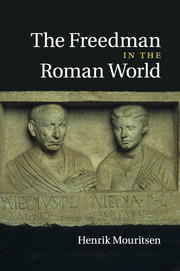Book contents
5 - The practice of manumission at Rome
Published online by Cambridge University Press: 21 January 2011
Summary
The previous chapters explored what might broadly be called the ‘construction’ of the freedman at Rome, i.e. the concepts used to define the process of manumission and the anxieties it gave rise to. These concerns formed part of the ideological backdrop against which we have to assess the practice of manumission, but they remain distinct and should ideally be kept separate analytically. The aim of this chapter is to establish how manumission actually worked and that means asking who was freed, how it happened, and what the underlying motivation was. The logical starting point for this inquiry is the question of scale, since a basic quantitative framework is crucial if we want to understand the practice of manumission.
THE SCALE OF MANUMISSION
Ancient history is notoriously short of reliable statistics and the study of slavery and manumission is little different in that respect. No extant source tells us how many freedmen were attached to any single patron, nor are there any figures for the number of freedmen at a given point in time in any Roman community. To complicate matters even further, there is little evidence on which even a vague estimate of the number of slaves might be based. As Scheidel pointed out, the most common estimate of the number of slaves in Italy, Brunt's suggestion of 3 million slaves under the empire, is not based on any specific evidence.
- Type
- Chapter
- Information
- The Freedman in the Roman World , pp. 120 - 205Publisher: Cambridge University PressPrint publication year: 2011



